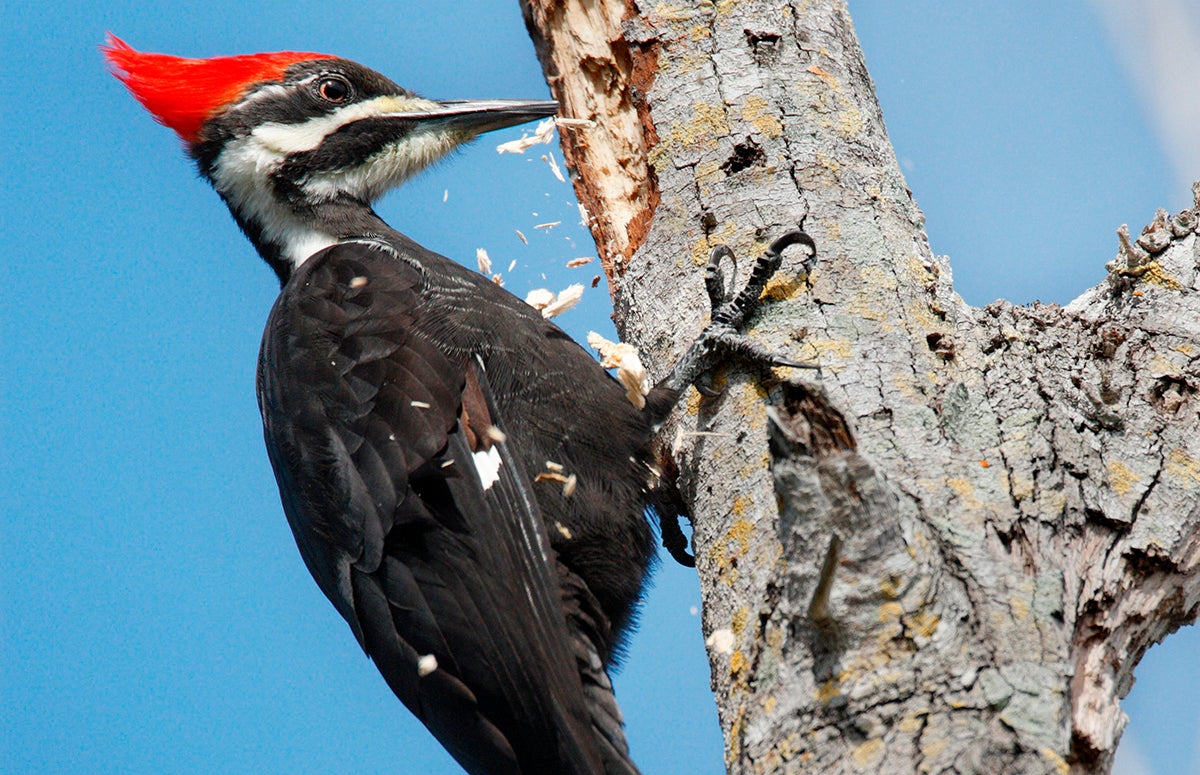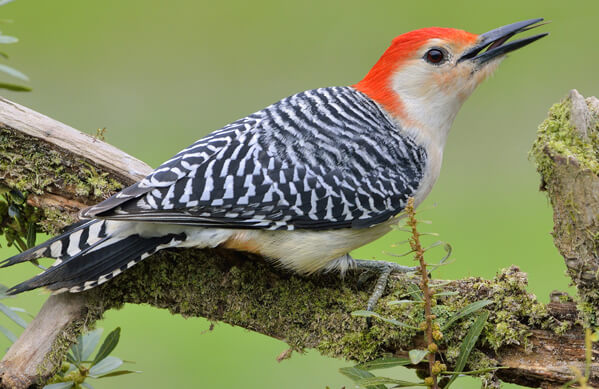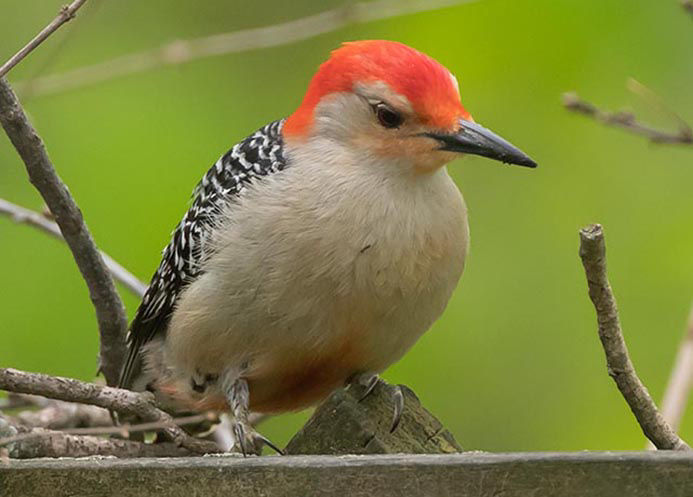Running Into Woodpeckers in Florida Variety: Environments and Habits
Woodpeckers: A Comprehensive Overview to Comprehending These Special Birds
Woodpeckers, with their distinct behaviors and physical qualities, have actually long captivated the curiosity of ornithologists and nature fanatics alike. As we discover the intricate anatomy, diverse species, and environmental importance of woodpeckers, a much deeper gratitude for these one-of-a-kind birds and the secrets they hold unravels.

Woodpeckers' Drumming Actions
Woodpeckers exhibit a rhythmic and precise drumming behavior that offers numerous crucial features in their everyday lives. This actions is mainly related to communication, territory protection, and foraging. The distinct drumming noise is created by the quick pecking of their beaks versus difficult surfaces such as tree trunks, branches, and even steel items.
Communication is an important aspect of woodpecker actions, and drumming plays a substantial duty in this process. Woodpeckers use drumming to develop their existence, attract friends, and preserve contact with their companions and children. The frequency, strength, and duration of drumming series communicate particular messages to other woodpeckers in the location.
Along with interaction, woodpeckers utilize drumming behavior for region defense. Woodpeckers in Florida. The loud and recurring drumming functions as a cautioning to possible trespassers, signaling that the location is already asserted. By establishing their region with drumming, woodpeckers reduce the chance of conflicts over beneficial resources such as food and nesting websites
Furthermore, woodpeckers also use drumming as a foraging technique. The balanced pecking helps them find insects hiding under the bark of trees by creating resonances that interrupt the target's concealment. This actions showcases the adaptability and resourcefulness of woodpeckers in using their drumming skills for numerous vital objectives.
One-of-a-kind Adaptations for Tree Climbing
Having actually understood the art of drumming to connect, safeguard region, and forage, woodpeckers have actually developed special adjustments that promote their exceptional climbing up capacities in their arboreal environments. Woodpeckers have zygodactyl feet, with 2 toes directing ahead and 2 toes directing backwards. These tail plumes supply stability and balance, enabling woodpeckers to maneuver up tree trunks with precision and dexterity.
Additionally, woodpeckers have powerful neck muscles and a special skull structure that aid in their climbing up capacities. Their solid neck muscle mass allow them to rapidly eat tree bark without experiencing whiplash, while their thick head and tiny mind serve as shock absorbers, safeguarding them from the impact of duplicated drumming. These adjustments collectively enable woodpeckers to navigate the upright world of trees with efficiency and grace.

Function of Woodpeckers in Ecosystems
Playing an essential function in forest ecological communities, woodpeckers contribute substantially to the equilibrium and health of their habitats with their one-of-a-kind habits and communications with various other species. One of the essential environmental features of woodpeckers is their duty in controlling insect populations. By foraging for bugs under the bark of trees, woodpeckers assist control bug populaces, preventing outbreaks that could hurt the general health and wellness of the woodland. In addition, woodpeckers develop dental caries in trees that act as crucial nesting sites for a variety of other bird species, promoting biodiversity within the community.
Moreover, the drumming and articulations of woodpeckers play an important role in interaction and territory facility. These audios not just serve to attract mates yet additionally assist define boundaries between various woodpecker areas, decreasing conflicts and advertising an unified coexistence within the woodland area. Generally, the presence of woodpeckers in woodland ecological communities highlights their value as keystone types, affecting the characteristics and functioning of these environments in diverse ways.
Composition: Specialized Beaks and Feet
In the detailed web of woodland communities, the specialized read this beaks and feet of woodpeckers are crucial adaptations that allow them to fulfill their vital ecological functions. Woodpeckers have unique physiological attributes that are specifically created to assist them in their foraging and nesting habits.
One of the most distinctive function of woodpeckers is their solid, chisel-shaped beaks. These beaks are flawlessly adapted for drilling right into timber to uncover bugs, larvae, and sap concealed beneath the bark of trees. The strong muscle mass and tough structure of their beaks enable woodpeckers to eat a price of approximately 20 times per second without triggering damages to their heads.
Additionally, woodpeckers have specialized feet that help in their acrobatic climbing up abilities. Their feet have two toes directing onward and 2 toes pointing backward, offering a strong hold on upright surface areas (Woodpeckers in Florida). This one-of-a-kind foot setup, along with stiff tail feathers that serve as a helpful prop, enables woodpeckers to stick to tree trunks and branches easily while they look for food or dig deep into nesting dental caries
Woodpecker Variety Variety
Woodpeckers are a varied team of birds discovered across various ecosystems worldwide, with over 200 well-known types exhibiting adjustments to different settings. Woodpeckers have actually developed to inhabit an array of atmospheres, from forests and timberlands to grasslands and deserts, each offering special difficulties that have actually influenced the evolution of unique woodpecker species.
An additional contributing factor to woodpecker varieties diversity is their specialized feeding actions. Different species have actually evolved to manipulate various food resources, such as pests, tree sap, fruits, and nuts, resulting in the growth of certain adaptations in beak form, size, address and toughness. These adaptations allow woodpeckers to forage effectively in their particular environments, decreasing competitors amongst species and promoting specific niche distinction. In addition, geographic seclusion and historic factors have played a function in shaping the circulation and variety of woodpecker species, causing the wide variety of specialized adaptations seen in these remarkable birds.

Final Thought
In final thought, woodpeckers are fascinating birds that show special drumming behavior, specialized adjustments for tree climbing, and play crucial roles company website in ecological communities. Their makeup, including specialized beaks and feet, permits them to prosper in their environment. With a varied range of woodpecker varieties discovered worldwide, these birds are important for keeping the health and wellness and equilibrium of forests and timberlands. Comprehending and appreciating the ins and outs of woodpeckers can provide beneficial insights right into the environment.